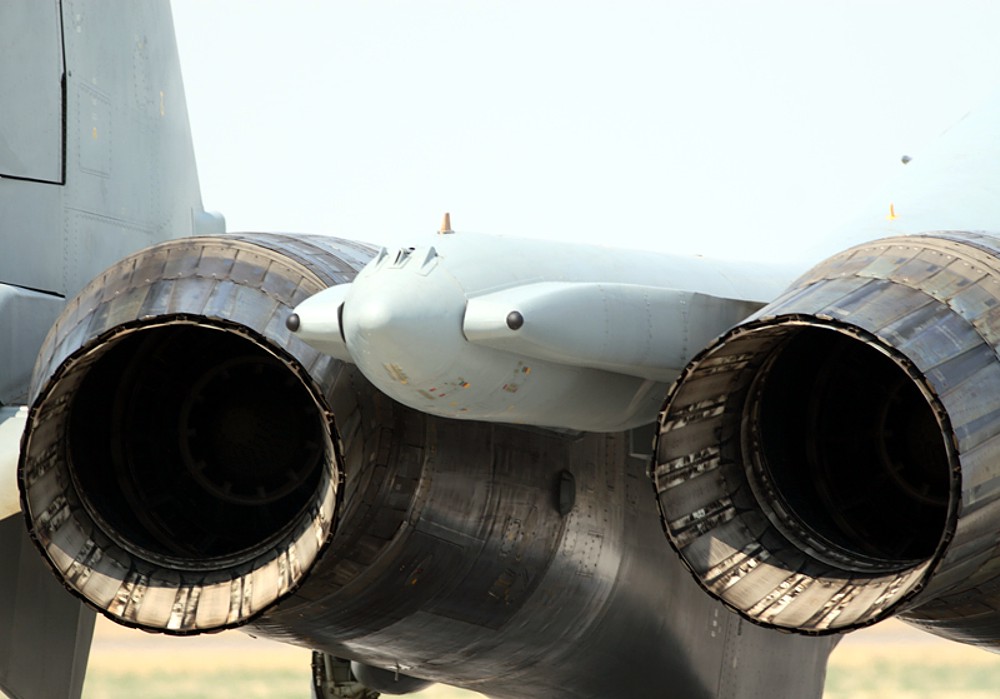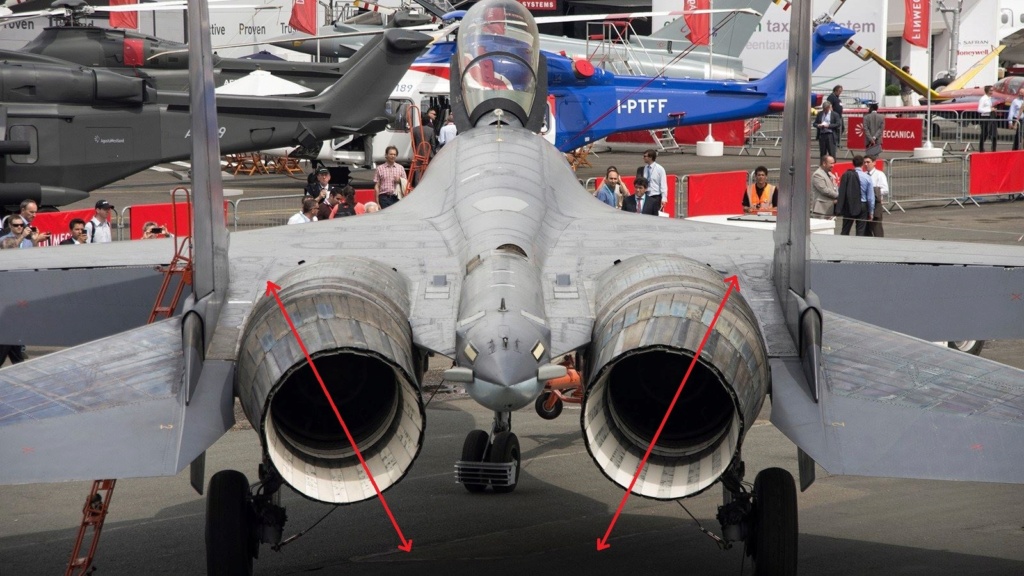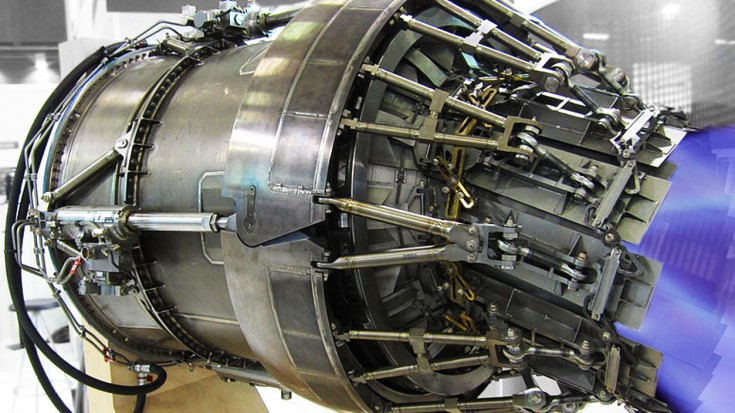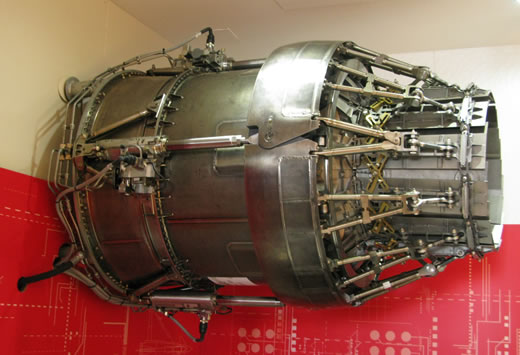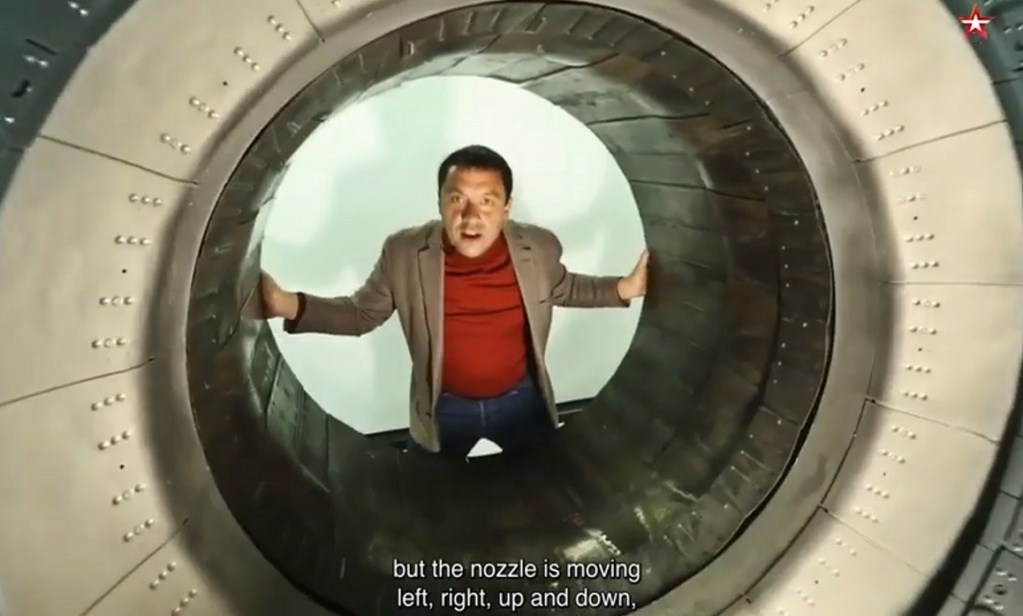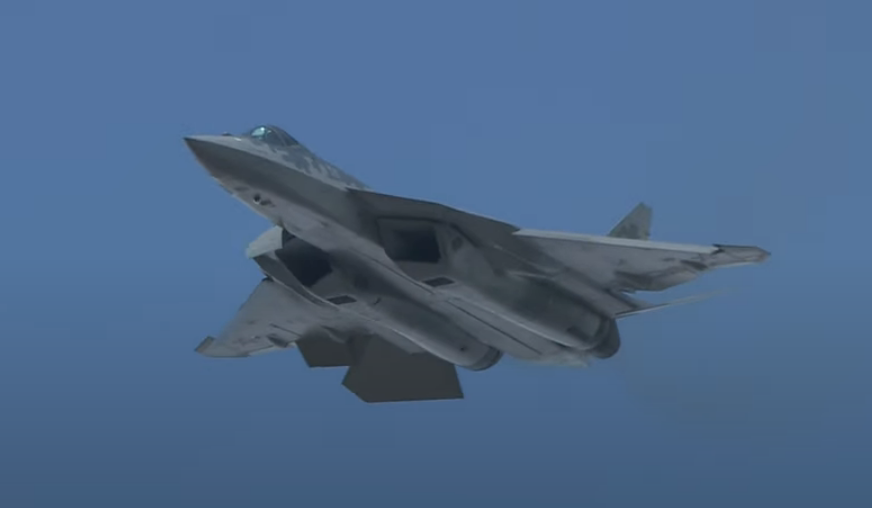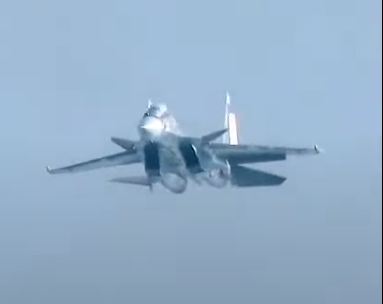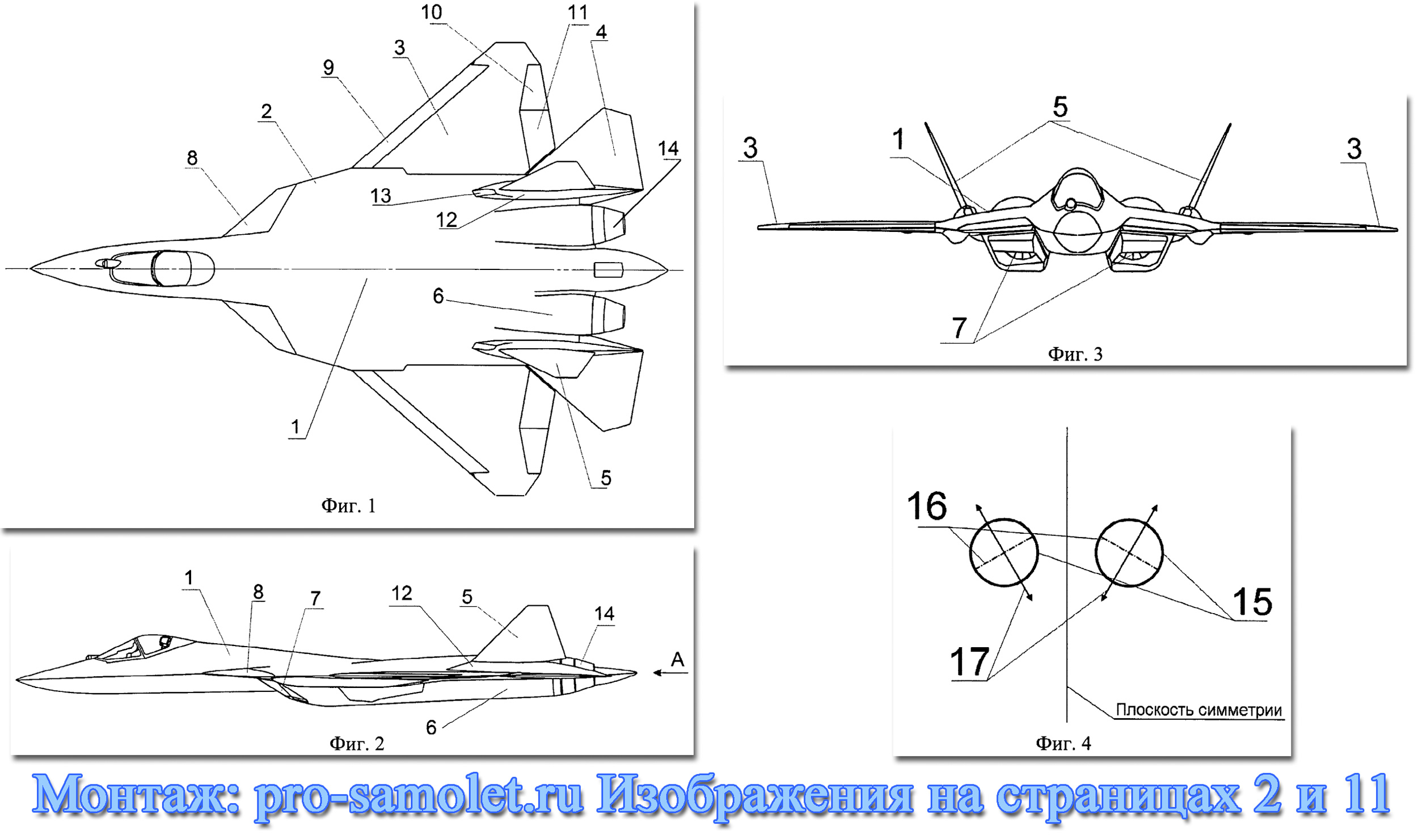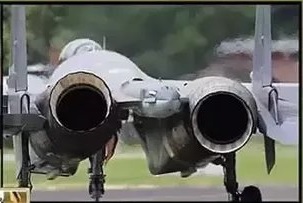Mir wrote:I'm going to be brief as I am no longer going to waist my time here, and you are also beginning to rely on snot nose mentality level insults now.
Here is your first screenshot of the Mig-29OVT during flat spin:

Even in this screenshot you posted you can clearly see the slats going down and the rudder on the vertical stabilizer moving to the outer position inducing yaw - despite having 3D nozzles. There is also some movement on the horizontal stabilizers and the flaps.
Yet you boldly claimed:
PeregrineFalcon wrote:All aerodynamic surfaces are basically in neutral/most optimal position.
PeregrineFalcon wrote:All aerodynamic surfaces (LEVCON's, flaps, ailerons, horizontal tails) are differentially deflected to counteract the rolling motion, in order to isolate the yaw motion. Without that you wouldn't be able to have precise and controlled flat spin you get with pure 3D TVC.
Then I showed you a flapping Mig-29OVT in a controlled spin rubbishing your initial claims but now you have a another interesting explanation as to why that would actually happen - despite what you claimed above.

What insults are you talking about?!
I was just predicting that you probably won't be able to understand what I'm talking about, and after reading your post I came to conclusion that I was 100% right! And not only that, you are constantly manipulating and nitpicking with your statements, and you are also using my quotes that are taken out of context to make a point, but I will address that latter.
Regarding Mig-29OVT screen shot, it is absolutely normal for the slats to be extended at high AoA, why is that even an issue?
It is just you trying to find something in attempt to discredit me, but that only tells me that you don't have a clue what are you talking about, because if you did, you would also know that at such high AoA, close to 90 deg. vertical stabilizer/rudder is practically useless because of the turbulent wake. Basically, entire airframe is blocking incoming airflow and the rudder doesn't have authority to induce yaw.
That is just the function of the CLAW (control law) of the FCS that is blending rudder input with TVC input at high AoA. When pilot is pushing the pedal, both the rudder and TVC are deflected at critical AoA.
I have used that particular screen shot of the Mig-29OVT as an clear example that the plane can rotate during flat spin just as easily with aerodynamic control surfaces more or less in neutral position, as an clear contrast to the Su-57 so that you could better understand the difference between true 3D TVC and canted 2D TVC and the way they operate.
And that difference is highlighted by the fact that you will never see the Mig-29OVT with the same position of the aerodynamic control surfaces you can see in Su-57 or Su-30SM during flat spin.
The fact that we can see MIG-29 OVT aerodynamic control surfaces deflecting more during initial stage of the flat spin is not in contradiction with what I have previously said, it is just supporting the fact that you will get even better results at critical stages of maneuver with aerodynamic control surfaces supplementing TVC.
In the case of the Su-57, their primary role during flat spin is to counter unwanted motion made by differential thrust vectoring of the canted 2D nozzles, which in turn provides precise nose pointing capability.
Is this bold enough for you, or you still don't get it?!
Mir wrote:Btw the Mig-29's "aggressive" flat spin is not nearly as aggressive as the Su30SM - so really nothing special that the Sukhoi with it's canted engines can not do.

In an earlier post you also made this claim
PeregrineFalcon wrote:Without that you can't make the same level of precision and control you get with true 3D TVC nozzles that is necessary for real combat application.
This is clear example of you trying to manipulate with what was said, and taking my statements out of the context! And that is the reason I will continue to intellectually rape you, even if this is just waste of my time!
First, I have never said that the Mig-29OVT flat spin is more aggressive than Su-30SM flat spin, I have said "Maneuver starts at 3:50, and even before it finishes the loop, Mig-29OVT is entering flat spin very aggressively!"
When you enter maneuver at higher speed and G load, you also have higher inertial forces that are acting on all axis that need to be restrained, and there we can see horizontal stabs deflecting uniformly to provide assistance in controlling the pitch axis, and at the same time providing TVC higher authority for controlling the yaw/rolling motion.
You will never see that in the case of Su-57, Su-30SM etc.
So, here is my full quote, "
All aerodynamic surfaces (LEVCON's, flaps, ailerons, horizontal tails) are differentially deflected to counteract the rolling motion, in order to isolate the yaw motion.
Without that you wouldn't be able to have precise and controlled flat spin you get with pure 3D TVC."
In essence, I was never arguing what plane has superior nose pointing capability, it's just you trying to deflect from original debate which was about type of thrust vectoring and the way they operate.
What you don't understand is the fact that some planes are better suited for post stall maneuverability than others, and based on the stall point, position of the center of gravity, center of lift (weather the plane is more or less stable, or unstable) its behavior is going to be different at critical AoA. Some planes will need more balancing from the TVC, some will need less, some planes will naturally be inclined to move the nose faster, some will be slower etc.
So, it is not all coming down to the type of TVC, because there are so many other factors that will influence controlability of the plane at post stall region.
For example, Su-57 was designed from the ground up to be able to exploit post stall region better than any other plane before it, and its aerodynamic configuration/shape is made accordingly, while the Mig-29 was never designed to operate in that region.
Mir wrote: In an earlier post you also made this claim
PeregrineFalcon wrote:Without that you can't make the same level of precision and control you get with true 3D TVC nozzles that is necessary for real combat application.
Question1: If 3D TVC nozzles were so great as you claim then why aren't there a single operational aircraft with a 3D nozzle in service?
Question2: If 3D TVC nozzles were so great as you claim then why did Sukhoi opt for the canted engines as they have already fully developed a 3D capable AL-31 version?
I think the Sukhois are doing pretty well in
real world combat so far.
First, there is absolutely no doubt that 3D TVC alone can provide superior controlability compared to 2D TVC, period!
Secondly, I have already given you answers for your questions, but you obviously have some problems with reading?!
Here is the quote:
"First, such solution is much more simpler with less moving parts, which is beneficial for the jet engine life cycle and ease of maintenance.
From the RCS perspective, it is much more easier and efficient to have less moving parts and intersections.
Also, the engine plume is uniformly putting the pressure on the nozzle walls which is not the case with the full 3D nozzle, and one of the main problems for the 3D nozzles in general was exhaust plume leakage.
Also, as can be seen, 3D TVC is less efficient regarding metal angle and plume angle deflection. You can have for example 15 deg. of metal angle deflection (nozzle deflection), but the plume deflection is always less than metal deflection.
Next, we can see plume spikes with 3D TVC deflection, and that is additionally reducing plume/thrust efficiency.
And since you have two widely spaced engines, you can create 3D TVC effect with canted differential nozzle deflection and clever FCS.
As a matter of fact, if we compare the Su-57 to J-10B with full 3D TVC, we come to conclusion that not only that the J-10B is not superior, but inferior in high AoA controlability and in nose pointing capability/rate. Also, fighters with one TVC engine can not create rolling moments, you need two engines for that, and while the 3D TVC is beneficial for the one engined plane, there are not many advantages compared to the two engined fighter with widely spaced, canted 2D TVC nozzles."
End of quote!
So, your attempt to try to frame me the notion that I think that planes like Su-30SM/35S/57 are not capable in the real world scenario is just pathetic!
But this canted 2D TVC arrangement will not work so well on other fighters. Try putting it on Mig-29, and you will definitely degrade its performance in comparison to OVT because its engines are not as widely spaced as with the Flanker family, so you get less moment arm and torque.
F-22, F-15, EF2000, Rafale etc. would be even worse in this regard!
Mir wrote: PeregrineFalcon wrote:...They also say that the nozzles can be deflected uniformly, or differentially where they create roll and yaw motions...
Sorry you had to waist so much time explaining something I already knew. I have repeated this line so many times here but it seems that some people just can't get it!
Don't be sorry, if you actually knew how this system operate, we wouldn't have this kind of conversation!
There are multiple occasions where you have claimed that the nozzles also have capability to move left and right which is pure nonsense!
Mir wrote: PeregrineFalcon wrote:If you are not able co understand that, I can't help you!
At least try and be more original when you try to insult me - but I guess the same quote above applies to you!
Would you rather want me to call you a retard?
Would that be more original because if you continue this path, that is going to be appropriate label for you?!


 Arkanghelsk
Arkanghelsk

